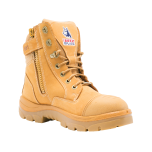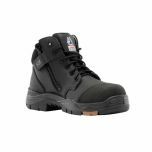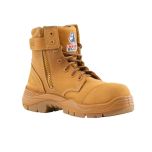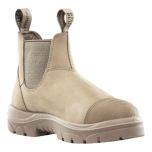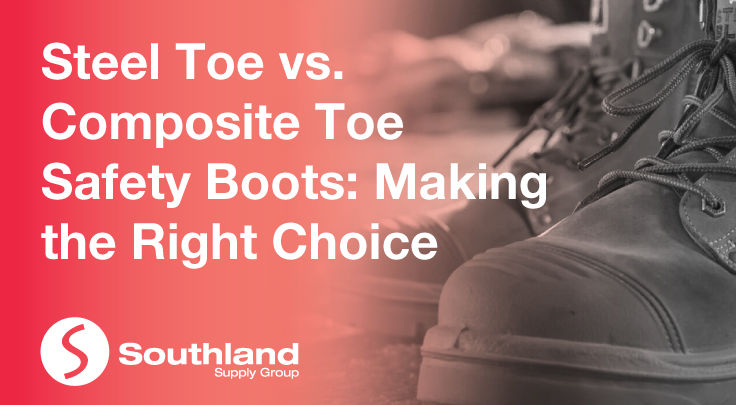
Today, safety boots are a minimum requirement in many worksites and facilities.
Two of the most popular options in the market are steel toe and composite toe work boots. Both offer valuable protection, but they differ in terms of materials, features, and advantages. Below is a comparison between steel toe boots and composite toe work boots to help you make an informed decision when choosing the right footwear for your workplace safety needs.
Steel Toe Work Boots
Steel toe work boots have been a trusted choice for decades. The toe cap is made of heavy-duty steel, offering excellent protection against impacts, heavy objects, and compression hazards. Here are some key points to consider:
a. Strength and Durability: Steel toe boots provide excellent strength and durability, making them ideal for heavy-duty work environments like construction sites and industrial settings.
b. Rigidity: Steel toe boots tend to be rigid, which can restrict foot movement and flexibility. Some workers find them less comfortable, especially during long hours of wear.
c. Temperature Conductivity: Steel is a conductor of temperature, which means that steel toe boots can transmit cold or heat, which can be an impactful factor in extreme temperature environments.
Composite Toe Work Boots
Composite toe boots are a newer alternative to steel toe boots. The toe cap is made of non-metal materials such as Kevlar, carbon fiber, or fiberglass. Below are some of their advantages:
a. Lightweight and Comfortable: Composite toe boots are considerably lighter than steel toe boots, reducing fatigue and allowing for greater mobility and flexibility. They are an excellent choice for workers who spend long hours on their feet.
b. Non-Conductive: Unlike steel toe boots, composite toe boots are non-metallic and do not conduct heat, cold, or electricity. This makes them a great option for electricians or workers in environments with electrical hazards. They also offer better insulation against temperature extremes.
c. Metal-Free: Composite toe boots are steel-free, making them airport friendly, as you do not have to take your boots off to go through security.
d. Safety Compliance: Composite toe boots generally meet the same safety standards as steel toe boots as required for workplace environments.
Selecting the right safety boots is crucial for protecting your feet from potential hazards in the workplace. Steel toe boots offer superior strength and durability, making them ideal for heavy-duty industries. However, composite toe boots provide a lightweight, comfortable, and non-conductive alternative, suitable for a wider range of applications, including electrical work.
When deciding between steel toe boots and composite toe boots, make sure to consider the specific demands of your job, as well as your comfort and safety requirements. Ultimately, the right choice will depend on finding a balance between protection, comfort, and compliance with workplace safety regulations.
For a wide range of safety boots including lace up work boots, elastic sided work boots, slip on work boots or gumboots, Southland Supply Group got you covered! Browse our collection at https://www.southland.com.au/footwear/safety

